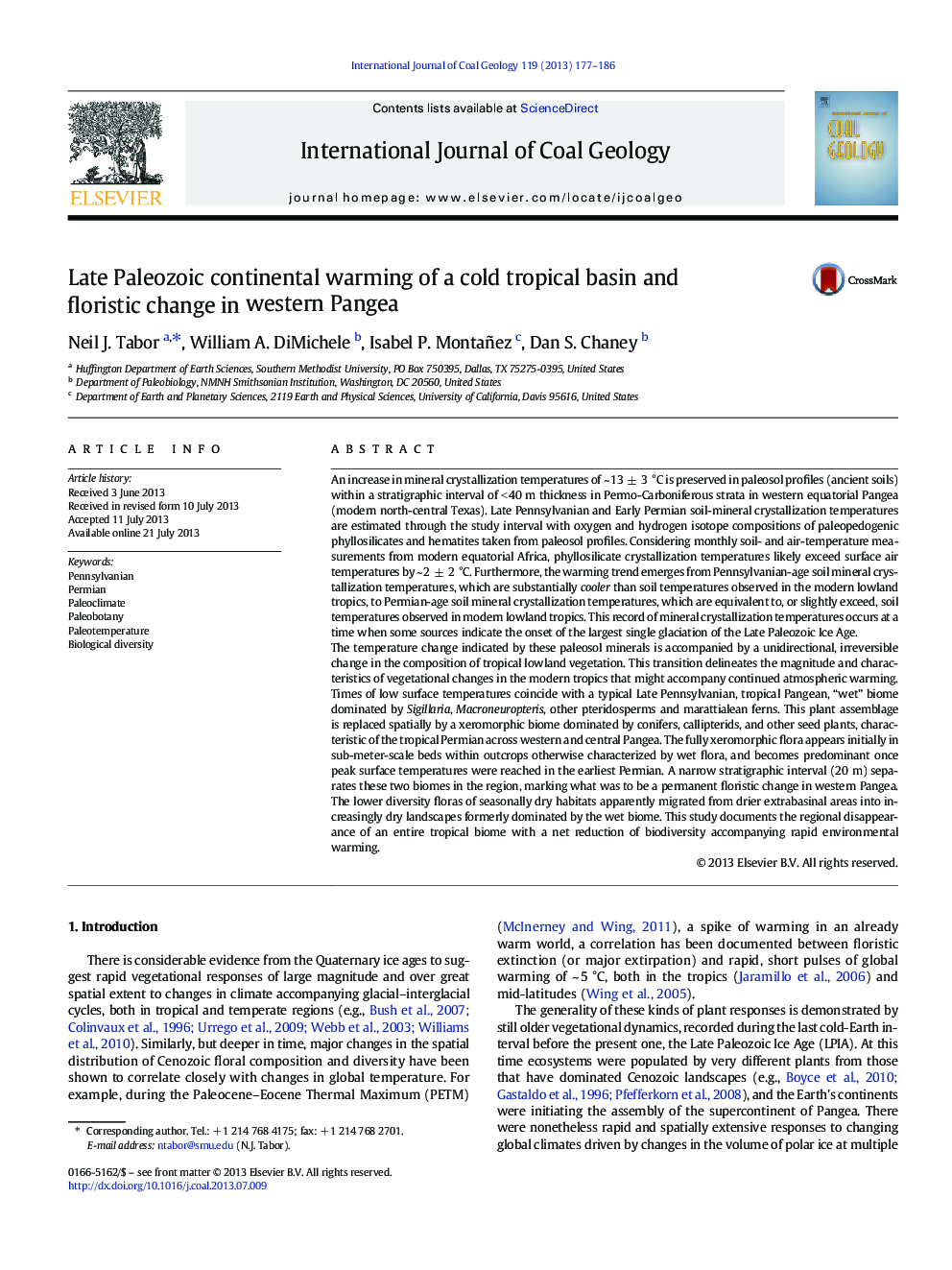| کد مقاله | کد نشریه | سال انتشار | مقاله انگلیسی | نسخه تمام متن |
|---|---|---|---|---|
| 1753195 | 1522577 | 2013 | 10 صفحه PDF | دانلود رایگان |

• Hygromorphic to xeromorphic biome change near the Permo-Carboniferous boundary.
• Paleosols indicate change from ever wet to seasonally dry over the same interval.
• Stable isotopes of paleosol minerals indicate a warming, from 22 ± 3 °C to 35 ± 3 °C.
• Pennsylvanian temperature estimates are cooler than modern tropical soils.
• Permian temperature estimates are indistinguishable from modern tropical soils.
An increase in mineral crystallization temperatures of ~ 13 ± 3 °C is preserved in paleosol profiles (ancient soils) within a stratigraphic interval of < 40 m thickness in Permo-Carboniferous strata in western equatorial Pangea (modern north-central Texas). Late Pennsylvanian and Early Permian soil-mineral crystallization temperatures are estimated through the study interval with oxygen and hydrogen isotope compositions of paleopedogenic phyllosilicates and hematites taken from paleosol profiles. Considering monthly soil- and air-temperature measurements from modern equatorial Africa, phyllosilicate crystallization temperatures likely exceed surface air temperatures by ~ 2 ± 2 °C. Furthermore, the warming trend emerges from Pennsylvanian-age soil mineral crystallization temperatures, which are substantially cooler than soil temperatures observed in the modern lowland tropics, to Permian-age soil mineral crystallization temperatures, which are equivalent to, or slightly exceed, soil temperatures observed in modern lowland tropics. This record of mineral crystallization temperatures occurs at a time when some sources indicate the onset of the largest single glaciation of the Late Paleozoic Ice Age.The temperature change indicated by these paleosol minerals is accompanied by a unidirectional, irreversible change in the composition of tropical lowland vegetation. This transition delineates the magnitude and characteristics of vegetational changes in the modern tropics that might accompany continued atmospheric warming. Times of low surface temperatures coincide with a typical Late Pennsylvanian, tropical Pangean, “wet” biome dominated by Sigillaria, Macroneuropteris, other pteridosperms and marattialean ferns. This plant assemblage is replaced spatially by a xeromorphic biome dominated by conifers, callipterids, and other seed plants, characteristic of the tropical Permian across western and central Pangea. The fully xeromorphic flora appears initially in sub-meter-scale beds within outcrops otherwise characterized by wet flora, and becomes predominant once peak surface temperatures were reached in the earliest Permian. A narrow stratigraphic interval (20 m) separates these two biomes in the region, marking what was to be a permanent floristic change in western Pangea. The lower diversity floras of seasonally dry habitats apparently migrated from drier extrabasinal areas into increasingly dry landscapes formerly dominated by the wet biome. This study documents the regional disappearance of an entire tropical biome with a net reduction of biodiversity accompanying rapid environmental warming.
Journal: International Journal of Coal Geology - Volume 119, 1 November 2013, Pages 177–186